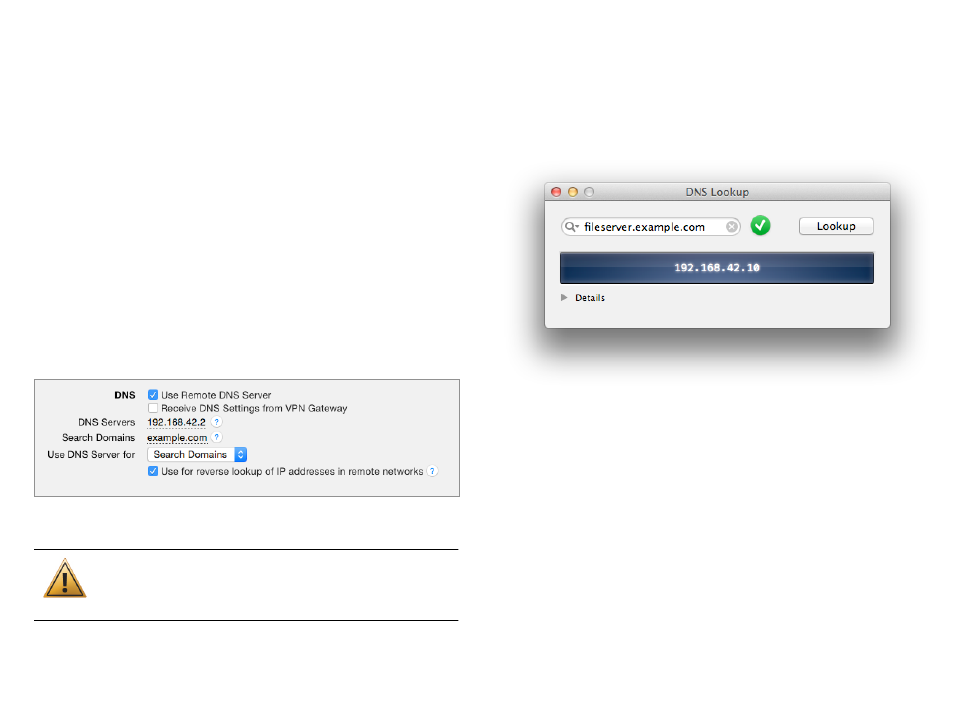Troubleshooting remote dns – equinux VPN Tracker 8.1.1 User Manual
Page 41

Troubleshooting Remote DNS
If you can access resources on the remote network using their IP addresses,
but not their host names, you will need a suitable remote DNS setup.
Prerequisites for remote DNS:
‣ A DNS server that is able to resolve those IP addresses exists.
‣ The DNS server can be reached through the VPN.
To illustrate the steps for debugging remote DNS issues, here’s an example
setup using remote DNS:
‣ We have a VPN connection to the remote network 192.168.42.0/24.
‣ In this network, there’s a file server fileserver.example.com.
‣ We can reach this file server using its IP address 192.168.42.10.
‣ We’d like to reach this file server using its host name fileserver.example.com.
‣ This host name cannot be looked up using public DNS servers, but there is
an internal DNS server with IP address 192.168.42.2 that is able to resolve
hosts in the example.com domain, including fileserver.example.com.
For remote DNS settings to take effect, the VPN needs to be reconnected. We
should now be able to connect to fileserver.example.com using its host name.
If you set a remote DNS server for “All Domains” instead of spe-
cific “Search Domains”, make sure it is a working DNS server that
can resolve hosts on the Internet. Otherwise, your Mac will seem
to be cut off from the Internet when the VPN is connected.
Steps to Troubleshoot
If connecting using the host name does not work, the first step is to use the
DNS Lookup Tool to verify that the host name can be looked up.
‣ Connect the VPN
‣ Choose Tools > DNS Lookup from the menu bar on top of the screen
‣ Enter the host name (here: fileserver.example.com) and click “Lookup”
If the DNS Lookup Tool displays the expected result, remote DNS is configured
correctly. In that case, the problem is with the actual connectivity, not DNS.
If DNS lookup fails, then the problem is with remote DNS. The next step is to
figure out if the problem is with the remote DNS server itself, or with the re-
mote DNS setup.
‣ Open a Terminal window (Applications > Utilities > Terminal)
‣ Enter:
dig
and press return. In
our example:
dig fileserver.example.com @192.168.42.2
If you see an “Answer Section” with the correct IP address, then both the con-
nectivity to the DNS server, and the DNS server’s response are ok. In that case,
the problem lies with the remote DNS setup. Double-check the configuration
in VPN Tracker.
41
